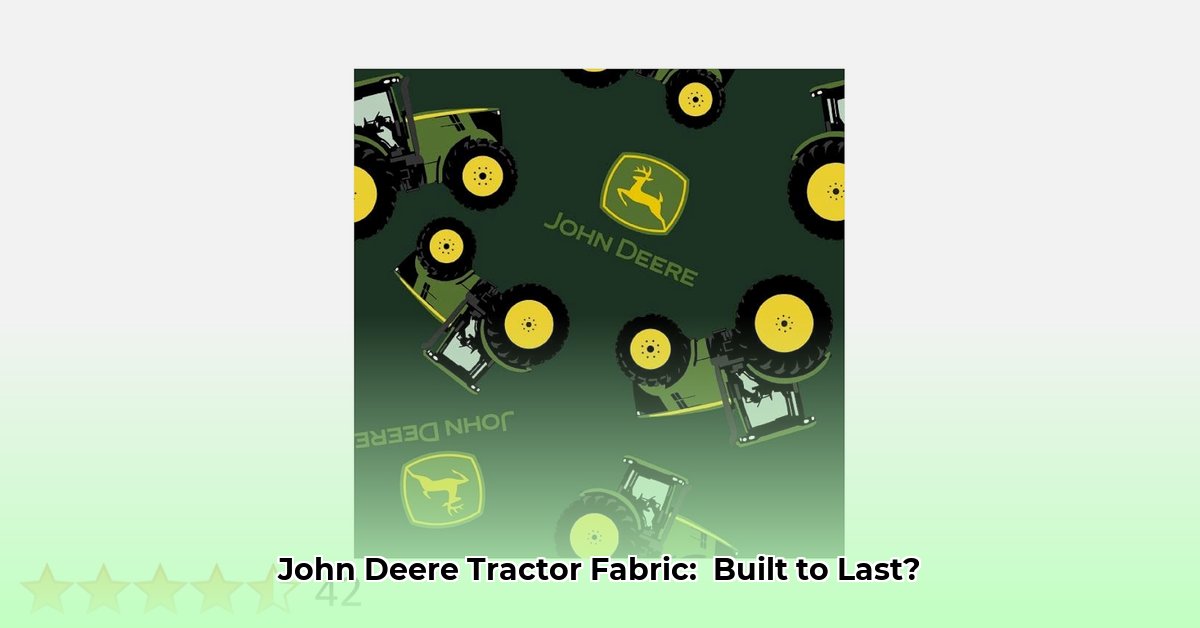
Understanding John Deere Tractor Fabrics: Composition and Properties
John Deere tractor fabrics aren't your average textiles; they're engineered for resilience. While the exact composition remains proprietary, it's likely a blend of high-performance materials chosen for their durability and weather resistance. Durable polyester, known for its strength and longevity, is a probable component, combined with tough nylon fibers for enhanced tear resistance and flexibility. To combat the sun's harsh rays and unpredictable weather, UV stabilizers prevent fading, while water-repellent coatings deflect moisture and mud. The specific blend might vary depending on the application—a seat cover requires different properties than a heavy-duty tarp. This tailored approach ensures optimal performance in various conditions. How does this blend make for such a robust fabric? Let's explore further. For more on John Deere equipment, see this page.
Manufacturing and Sustainability
While the specifics of John Deere's manufacturing processes are confidential, it's reasonable to assume a focus on sustainability. The company has publicly committed to environmentally responsible practices. Many manufacturers are incorporating recycled materials (like recycled polyester) and employing energy-efficient production methods. It's highly probable that John Deere is adopting similar strategies to minimize waste and reduce their environmental footprint. This commitment to sustainability aligns with growing industry-wide practices.
Applications of John Deere Tractor Fabric
Beyond tractor seats, this durable fabric finds diverse applications. Its resilience makes it ideal for:
- Equipment Covers: Protecting valuable machinery from weather damage and debris.
- Protective Tarps: Shielding equipment during transport and storage.
- Seat Covers: Providing comfort and extending the life of original seats.
- Storage Solutions: Creating durable storage bags and containers for farm supplies.
Care and Maintenance: Keeping Your Fabric in Top Condition
Proper care is crucial for extending the lifespan of your John Deere tractor fabrics. Follow these steps:
- Regular Cleaning: For light dirt, use a mild detergent and a soft brush or sponge. Avoid abrasive cleaners.
- Spot Cleaning: Address spills promptly by blotting gently; rubbing could spread the stain.
- Drying: Air drying is recommended. Avoid direct sunlight, which can cause fading. Allow complete drying to prevent mildew.
- Storage: Store fabrics in a cool, dry area away from direct sunlight and moisture.
Following these simple steps will help keep your John Deere fabrics performing at their best for years to come. What are some other effective cleaning methods you use?
Sustainability Considerations: Environmental Impact
While complete details regarding John Deere's manufacturing processes are unavailable publicly, the ongoing industry trend toward eco-friendly practices suggests that recycled materials and reduced energy consumption are likely key elements of their production. The potential use of recycled polyester and other sustainable materials demonstrates a commitment to environmental stewardship. However, for definitive sustainability information, contacting John Deere directly is recommended for the most accurate and current details.
Conclusion: Durability Meets Sustainability
John Deere tractor fabrics offer exceptional durability and are likely produced with increasing attention to sustainability. Their versatile applications extend beyond tractor seats to a variety of agricultural uses. Proper care and maintenance significantly extend the life of these fabrics, maximizing their value and minimizing waste. Remember, while we've presented informed speculation based on industry trends, the most complete information remains with John Deere themselves.